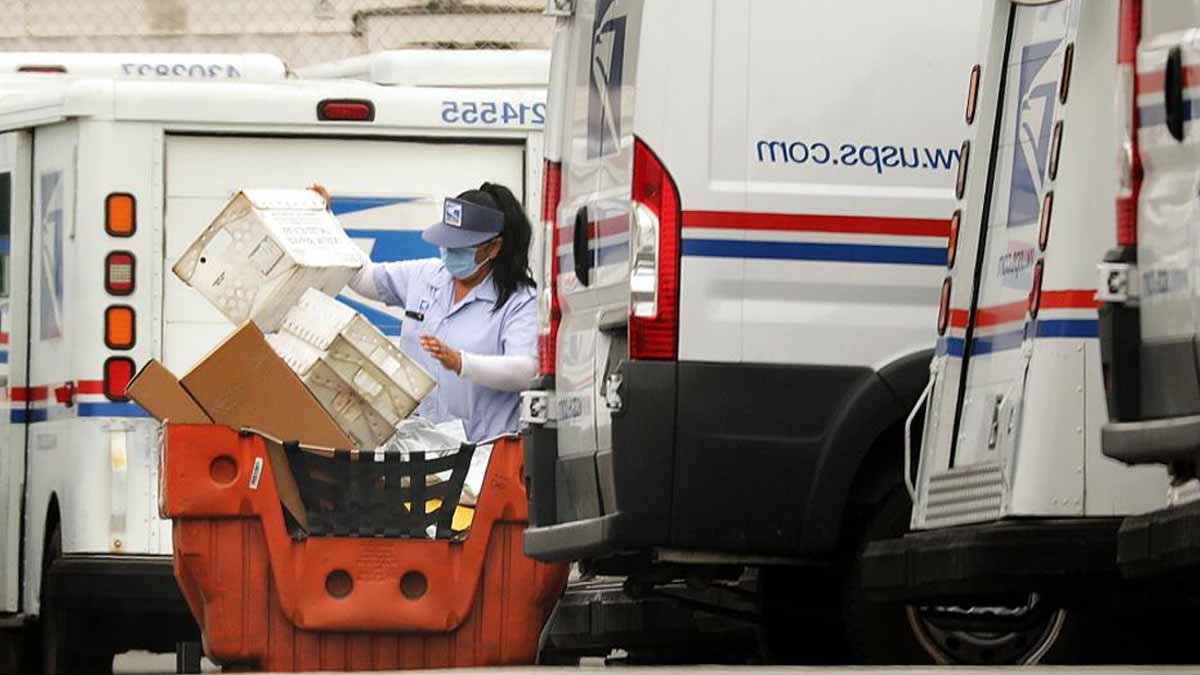The announcement has shaken public opinion: the US Postal Service is facing one of the most significant challenges in its history. More than 10,000 employees will soon be affected after the signing of a controversial agreement with DOGE. At the heart of the storm lies a service millions of Americans rely on daily, now caught in a wave of drastic change. What happens next raises serious questions about the future of this national institution and the people who depend on it.
What the agreement changes and what it signals
The plan links government efficiency goals to sweeping workforce cuts, framed as a reset for a mail network under strain. Officials promote savings, streamlined routes, and tighter performance tracking. Unions warn the scale is risky because service depends on people, local knowledge, and steady staffing in post offices and sorting hubs.
Although described as temporary stabilization, the move sets expectations for smaller footprints and accelerated automation. It also hints at consolidation of facilities, fewer retail counters, and stricter delivery standards. The challenge is balancing cost discipline with the universal mission of serving all households.
Communities read the announcement as a sign of deeper change to come. Rural residents fear thinner coverage because long routes get harder with fewer carriers. Small businesses worry about confidence, since shipping promises drive sales; uncertainty about speed or pickup times quickly nudges customers to private couriers.
US Postal Service operations under the DOGE cost-cutting playbook
Leaders outline a sequence: reduce headcount, rationalize routes, and expand automation in plants. Software will reschedule trucks and flights to cut idle time. Managers will measure delivery windows more tightly, then adjust staffing as volumes shift with seasons, holidays, and e-commerce cycles.
DOGE promotes standard toolkits for process audits, procurement, and onboarding. Advocates say scorecards help managers sustain savings without consultants. Critics counter that rigid templates miss local realities, mountain roads, heat waves, and medication shipments that cannot wait for optimization on time.
Past restructurings show trade-offs. Automation speeds sorting, yet human oversight prevents cascading errors when labels smear or barcodes fail. Route consolidation trims miles, yet longer walks risk delays for seniors. Any savings must preserve trust, since customers quickly notice slips in predictability.
Real-world impacts on mail, medicines, and rural access
For many households, the US Postal Service anchors daily routines and budgets. Seniors rely on consistent delivery for prescriptions, statements, and benefits cards. Small shops need dependable pickups to keep cash flowing. If routes thin, residents drive farther for service, raising costs and draining fragile local economies.
Delivery standards already feel tight during storms and peak seasons. With fewer carriers, small disruptions can ripple across towns. Customers tolerate occasional delays, yet repeated slips erode trust, pushing packages toward private couriers with higher fees and limited coverage.
Digital substitutions help only partly. Bills move online, yet parcels keep rising with e-commerce. Telehealth depends on shipped test kits and devices, so delays strain clinics. Ballot access also matters, since vote-by-mail rules assume predictable handling.
How the US Postal Service reached this financial breaking point
The agency reports about $78 billion in annual revenue, yet legacy costs keep mounting. Retirement obligations and injury compensation strain cash, while regulatory caps limit pricing flexibility. Leaders argue that headcount reductions will free $3.5 billion a year.
Skeptics note earlier workforce shocks. A cut of roughly 30,000 roles in 2021 reshaped schedules and left gaps in some facilities. Today’s plan touches a network employing around 640,000 people, so ripple effects will reach families, landlords, local diners, and vendors.
Postmaster General Louis DeJoy frames the move as survival, not retreat. He says a smaller, faster network can still meet standards with better routing, analytics, and automation. Opponents demand safeguards like audits and service targets that trigger reversals if delivery falls below set thresholds.
What comes next: scenarios, safeguards, and the privatization debate
Several paths are visible. One retains public ownership while installing firm service floors tied to funding. Another shifts noncore functions to contractors, keeping last-mile delivery public. A more radical version invites private carriers into shared hubs, with regulators policing access fees, data standards, and protections.
Safeguards should be specific and fair. Publish route-level reliability metrics that towns can track easily. Tie leadership bonuses to delivery equity, not only savings. Fund resilience lines for emergency surges during fires, floods, and winter peaks.
Lawmakers also weigh the larger question: what do citizens expect from the US Postal Service today. If the answer remains universal, affordable access, then reforms must protect reach first. That means measured automation, consolidation, and transparent timelines, with labor at the table so experience guides redesign.
Why preserving nationwide access will define this turning point
The coming months will test leadership, labor, and communities alike. Savings matter, yet trust matters more because mail underpins health, commerce, and civic life. Keep the US Postal Service focused on reach, clarity, and fair timelines, while watchdogs track delivery equity. If reforms pair efficiency with protection, the network can modernize without losing its public promise.
